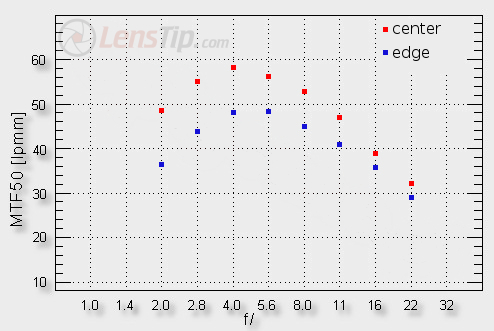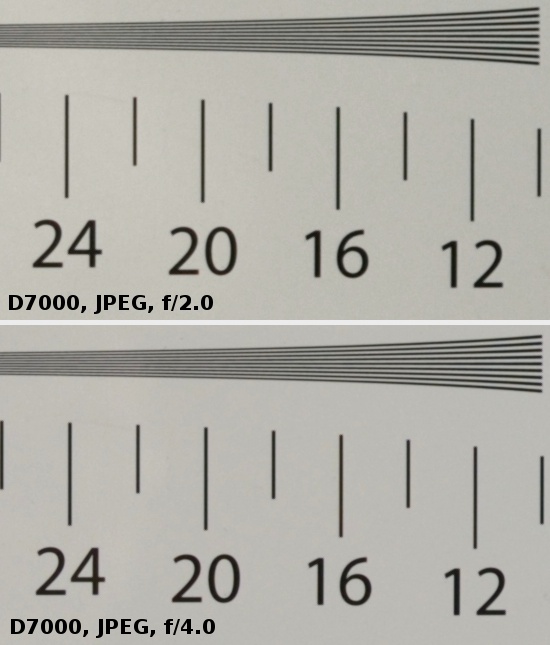Samyang 16 mm f/2.0 ED AS UMC CS
4. Image resolution
You can say we expect that the best lenses, tested on the D7000, will be able to reach the peak of their possibilities near 55-58 lpmm and the decency level will be situated at 37-39 lpmm.
Let’s check how the Samyang 16 mm f/2.0 ED AS UMC CS compares here, only adding that the measurement errors of the presented values ranged from 0.2 to 0.7 lpmm.
Please Support UsIf you enjoy our reviews and articles, and you want us to continue our work please, support our website by donating through PayPal. The funds are going to be used for paying our editorial team, renting servers, and equipping our testing studio; only that way we will be able to continue providing you interesting content for free. |
- - - - - - - - - - - - - - - - - - - - - - - - - - - - - - - - - - - - - - - - - - - - - - - -

The performance of the tested lens in the frame centre is excellent. Even at the maximum relative aperture it can generate high MTFs, reaching a bit less than 50 lpmm, and provide a very good aperture fastness. On slight stopping down it gets to 54-55 lpmm and by f/4.0 it goes as high as 58 lpmm, reaching truly sensational peak of its possibilities – hats off!
The performance on the edge of the frame deserves to be praised as well. A wide angle of view and a good aperture fastness combined together always create a difficult combination – that’s why by f/2.0 the images are still not of a good quality, just approaching the decency level. Still it is not a reason to complain. By f/2.8 the resolution is already good and from f/4.0 upwards even very good. The crops, shown below, were taken from JPEG files saved along RAW files used for the analysis above.
 |






